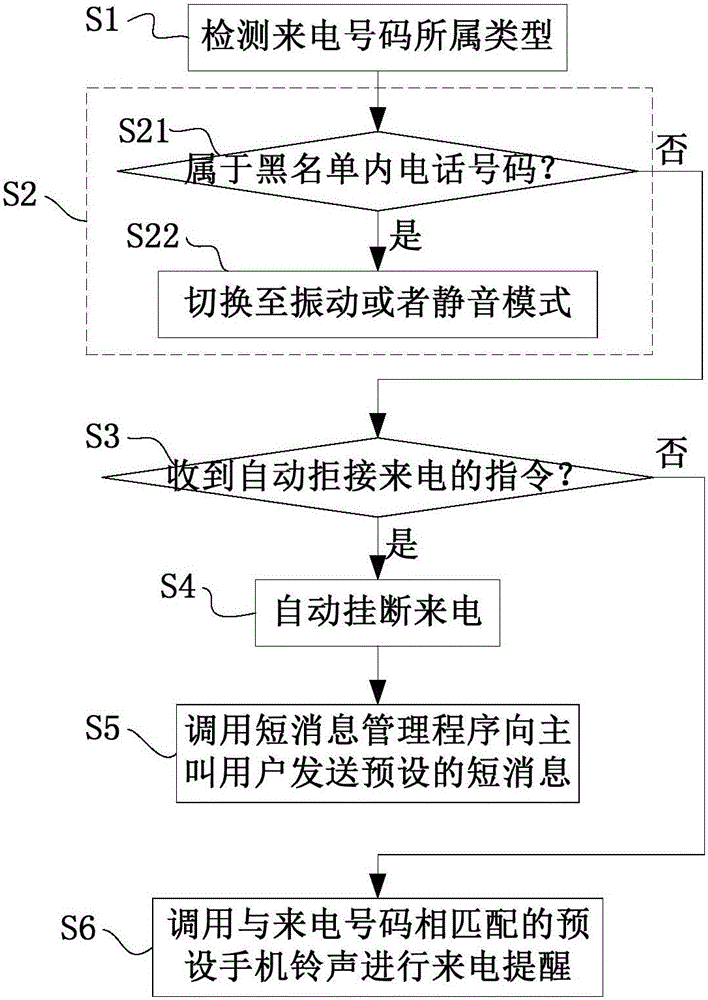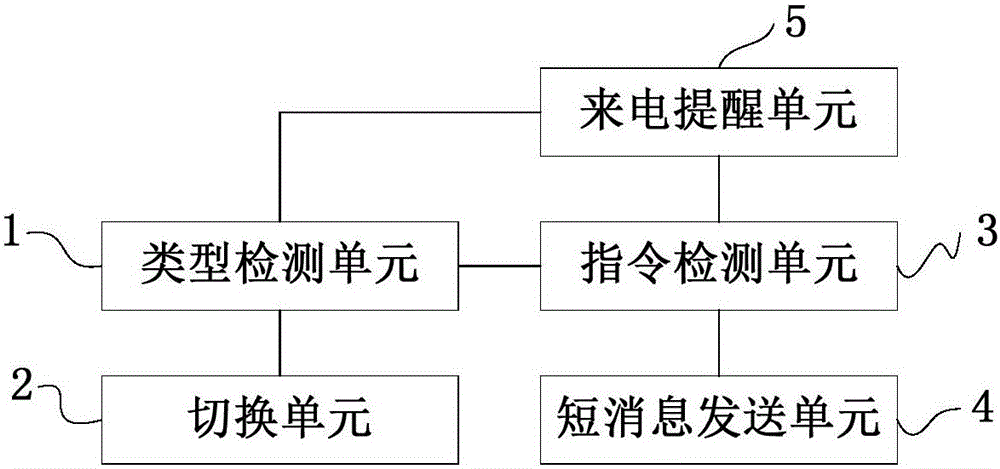Incoming call processing method and device, and mobile phone
A technology for handling incoming calls and incoming calls, applied in the field of communications
- Summary
- Abstract
- Description
- Claims
- Application Information
AI Technical Summary
Problems solved by technology
Method used
Image
Examples
Embodiment 1
[0036] This embodiment provides a method for processing incoming calls, which is used for mobile phones, such as figure 1 shown, including the following steps:
[0037] S1. Detect the type of the incoming call number. Specifically, most of the mobile phones have a classification setting function for phone numbers, such as friends, family members, call-in rejection users (blacklist) and other groups. After receiving an incoming call, by comparing the incoming caller number with the phone numbers in each group, it can be detected whether the caller number belongs to a friend, family member or a phone number in the blacklist.
[0038] S2. Determine whether mode switching is required. Further includes:
[0039] S21. Determine whether the incoming call number belongs to a phone number in a preset blacklist. If yes, go to step S22, if not, go to step S3.
[0040] S22. Switch the mobile phone to vibration or silent mode.
[0041] The incoming call processing method in this embo...
Embodiment 2
[0049] This embodiment provides an incoming call processing device for mobile phones, such as figure 2 shown, including:
[0050] The type detecting unit 1 is used for detecting the type of the incoming call number.
[0051] The switching unit 2 is used to switch the mobile phone to vibration or silent mode when the incoming call number belongs to the phone number in the preset blacklist.
[0052] The incoming call processing device in this embodiment first detects the type of the incoming call number, and if the incoming call number belongs to a phone number in the blacklist, the mobile phone is switched to a vibration or silent mode. Preferably, switch to silent mode. With this setting, even if the user does not answer the call, it will not cause any disturbance to the user and the crowd around the user, and the calling party will only hear the incoming call tone after the mobile phone is connected, and will not be aware of his own voice. The phone number has been pulled...
Embodiment 3
[0059] This embodiment provides a mobile phone, including the incoming call processing device in Embodiment 2.
[0060] The mobile phone in this embodiment first detects the type of the incoming call number through its incoming call processing device, and if the incoming call number belongs to a phone number in the blacklist, the mobile phone is switched to a vibration or silent mode. Preferably, switch to silent mode. With this setting, even if the user does not answer the call, it will not cause any disturbance to the user and the crowd around the user, and the calling party will only hear the incoming call tone after the mobile phone is connected, and will not be aware of his own voice. The phone number has been pulled into the blacklist, which will not cause embarrassment between the caller and the mobile phone user.
[0061] In addition, when the incoming call processing device in the mobile phone does not belong to the phone number in the preset blacklist, it will furth...
PUM
 Login to View More
Login to View More Abstract
Description
Claims
Application Information
 Login to View More
Login to View More - Generate Ideas
- Intellectual Property
- Life Sciences
- Materials
- Tech Scout
- Unparalleled Data Quality
- Higher Quality Content
- 60% Fewer Hallucinations
Browse by: Latest US Patents, China's latest patents, Technical Efficacy Thesaurus, Application Domain, Technology Topic, Popular Technical Reports.
© 2025 PatSnap. All rights reserved.Legal|Privacy policy|Modern Slavery Act Transparency Statement|Sitemap|About US| Contact US: help@patsnap.com


